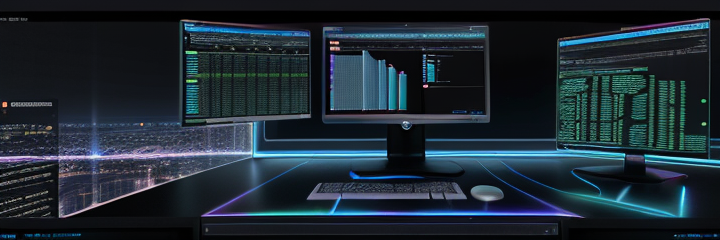Integrated Development Environments (IDEs)

Integrated Development Environments (IDEs) are software applications that provide comprehensive facilities to programmers for software development. They typically include a code editor, compiler or interpreter, debugger, and other tools that streamline the development process. IDEs help manage the complexity of coding and improve productivity by providing a unified interface for various development tasks.
Key Features of IDEs
1. Code Editor
-
Overview: A powerful text editor tailored for writing and editing code. Features often include syntax highlighting, code completion, and linting.
-
Example:
- Syntax highlighting for different programming languages.
- Autocompletion to speed up coding.
- Code snippets for common tasks.
2. Compiler/Interpreter
-
Overview: Tools to convert code into executable programs (compiler) or to execute code directly (interpreter). IDEs often include these tools integrated into the environment.
-
Example:
- Compilation errors and warnings are shown directly in the editor.
- Direct execution of scripts and viewing of output.
3. Debugger
-
Overview: A tool for identifying and fixing bugs in code. IDEs provide features like breakpoints, step execution, and variable inspection.
-
Example:
- Set breakpoints to pause execution at specific lines.
- Step through code to monitor execution flow.
- Inspect variable values and call stacks.
4. Version Control Integration
-
Overview: Integration with version control systems (e.g., Git) allows you to manage code changes, commits, and branches from within the IDE.
-
Example:
- Commit changes and view diffs without leaving the IDE.
- Resolve merge conflicts with visual tools.
5. Project Management
-
Overview: Tools for organizing project files and resources, managing dependencies, and building projects.
-
Example:
- File explorer to navigate project directories.
- Build automation tools and task runners.
6. Code Navigation
-
Overview: Features that help you quickly navigate and understand large codebases, such as go-to-definition, find references, and search functionality.
-
Example:
- Jump to the definition of a function or class.
- Find all references to a variable or function.
Popular IDEs
1. PyCharm
-
Overview: A popular IDE specifically for Python development, created by JetBrains. It offers advanced features such as a powerful code editor, integrated debugger, and version control support.
-
Key Features:
- Intelligent code completion and code analysis.
- Integrated Python console and Jupyter notebook support.
- Excellent support for web frameworks like Django and Flask.
-
Basic Usage:
# Install PyCharm from the official website # Create a new project and configure a Python interpreter # Start coding with features like code completion and refactoring tools
2. Visual Studio Code (VS Code)
-
Overview: A lightweight, open-source editor developed by Microsoft, which can be extended into a full-fledged IDE with plugins and extensions. It supports multiple languages and development environments.
-
Key Features:
- Rich ecosystem of extensions for various languages and tools.
- Integrated terminal and version control.
- Debugging support for multiple languages.
-
Basic Usage:
# Install VS Code from the official website # Install Python extension for code completion and linting # Use the integrated terminal and debugger for development
3. Eclipse
-
Overview: An open-source IDE primarily used for Java development, but it supports various other languages through plugins. It is known for its extensibility and robust feature set.
-
Key Features:
- Comprehensive support for Java development.
- Powerful debugging and testing tools.
- Extensible with a wide range of plugins.
-
Basic Usage:
# Install Eclipse from the official website # Configure a workspace and install relevant plugins # Develop and debug Java (or other language) projects
4. NetBeans
-
Overview: An open-source IDE with support for various programming languages, including Java, C++, and PHP. It offers a modular structure with a variety of built-in tools and extensions.
-
Key Features:
- Support for multiple languages and project types.
- Integrated profiler and debugger.
- Project management and build automation tools.
-
Basic Usage:
# Install NetBeans from the official website # Create and manage projects using the built-in tools # Use the IDE’s features for coding, debugging, and building
5. Jupyter Notebook
-
Overview: An open-source web application that allows you to create and share documents with live code, equations, visualizations, and narrative text. Widely used in data science and research.
-
Key Features:
- Interactive computing with support for many languages via kernels.
- Rich display capabilities including plots and charts.
- Integration with data science libraries like Pandas and Matplotlib.
-
Basic Usage:
# Install Jupyter Notebook using pip pip install notebook # Start the Jupyter Notebook server jupyter notebook
Choosing the Right IDE
-
Project Requirements: Select an IDE based on the specific needs of your project. For example, PyCharm for Python development, VS Code for a versatile editor, or Eclipse for Java.
-
Personal Preferences: Consider the features you value most, such as a lightweight interface, powerful debugging tools, or extensive plugin support.
-
Community and Support: Look at the community support and available documentation for the IDE to ensure you have access to resources and help when needed.
Conclusion
IDEs are crucial tools in software development, providing a range of features that facilitate coding, debugging, and project management. By leveraging the capabilities of an IDE, developers can streamline their workflows, enhance productivity, and maintain high-quality code. Choosing the right IDE for your needs can significantly impact your development experience and efficiency.